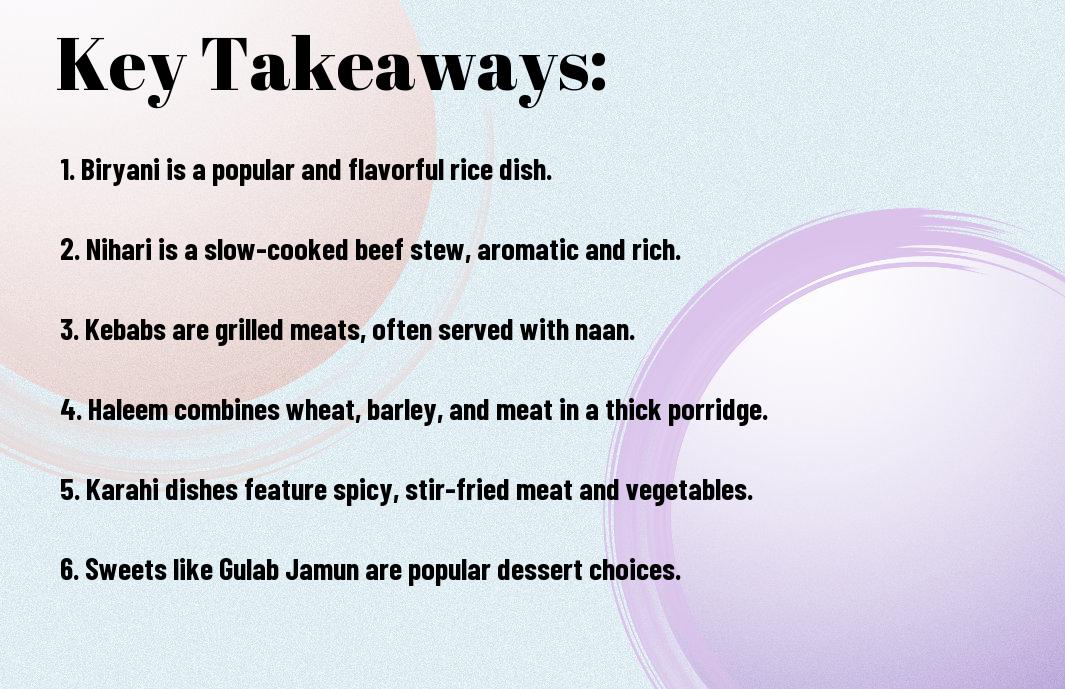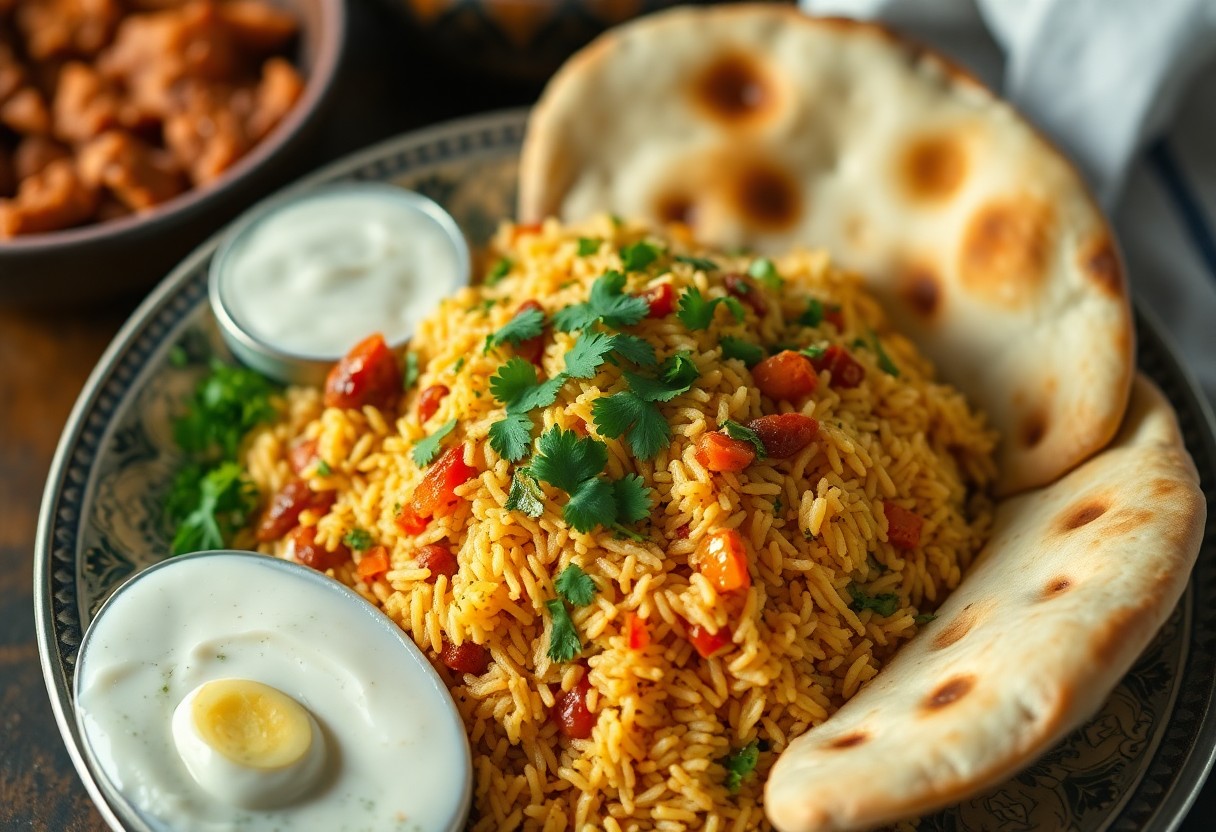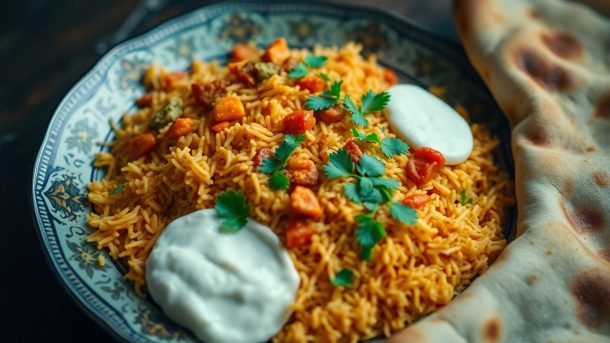Most food enthusiasts are eager to explore the diverse and rich culinary heritage of Pakistan. With its vibrant flavors and unique dishes, Pakistani cuisine offers an array of meals that reflect the country’s cultural diversity. From the sizzling street food to traditional family recipes, you’ll discover that each region has its own signature dishes, showcasing the influence of various cultures and ingredients. In this blog post, you will learn about some of the most famous foods of Pakistan and the stories behind them, enriching your understanding of this fascinating cuisine.
Key Takeaways:
- Biryani: A renowned rice dish known for its rich flavors and aromatic spices, often made with marinated meat and served with raita.
- Nihari: A slow-cooked stew typically made with beef or lamb, traditionally enjoyed as a breakfast dish and often paired with naan.
- Samosas: Popular savory snacks, these deep-fried pastries are filled with spiced potatoes or meat, widely enjoyed as appetizers or street food.
The Culinary Heritage of Pakistan
A tapestry of flavors and traditions, the culinary heritage of Pakistan reflects centuries of history, blending influences from diverse cultures and regions. Each dish tells a story, connecting you to the people and places that shaped them. From the rich spices of Punjab to the aromatic kebabs of Sindh, every province has its unique contributions, making Pakistani cuisine a vibrant and robust experience for food lovers.
Regional Influences
Heritage plays a significant role in shaping the flavors and cooking methods across Pakistan’s regions. You can see how geographical diversity, climate, and local ingredients create distinct culinary styles. For example, the Balochistan province offers hearty, meat-centric dishes, while the fertile lands of Punjab are known for their rice and lentil-based offerings. The blend of these regional influences makes Pakistani cuisine extraordinarily varied and flavorful.
Historical Context
About the culinary landscape of Pakistan, its historical context reveals a rich tapestry woven from various civilizations, including the Indus Valley, Mughal Empire, and British colonial influences. As you explore, you’ll find how these historical periods not only enriched the flavors but also introduced new customs and ingredients into the Pakistani kitchen.
Contextually, each wave of conquest, trade, and cultural exchange has left a mark on the culinary practices of the region. This evolution led to the incorporation of spices, cooking techniques, and food philosophies, giving you a glimpse into Pakistan’s rich history through its food. From Mughal influences on biryani to the simplicity of traditional rustic dishes, every bite connects you to centuries of shared heritage and cultural dialogue.

Iconic Dishes
If you are exploring Pakistani cuisine, you cannot miss the iconic dishes that define its rich culinary heritage. Each dish tells a story of tradition and flavor, showcasing the diverse influences that come together to create a unique dining experience. Whether you prefer spicy, savory, or aromatic, there’s something for everyone among the beloved classics of Pakistan.
Biryani
Any food enthusiast will tell you that biryani is the crown jewel of Pakistani cuisine. This flavorful rice dish, featuring marinated meat and fragrant spices, captures the essence of culinary diversity. With various regional variations, biryani has a loyal following that appreciates its tempting aroma and satisfying taste.
Nihari
At the heart of Pakistani comfort food lies nihari, a slow-cooked stew that is traditionally enjoyed during breakfast. Steeping in flavor, it consists of tender meat simmered for hours with a blend of spices, creating a rich and hearty dish. Garnished with ginger, cilantro, and a squeeze of lemon, nihari is often served with naan or parathas, making it a perfect way to start your day or enjoy a late-night feast.
Dishes like nihari evoke a sense of home, with their warmth and depth of flavor that resonate with your taste buds. This beloved dish not only fills your stomach but also warms your soul, reflecting the age-old traditions of family gatherings and shared meals. As you savor each bite, you’ll appreciate the rich history that has shaped this iconic delicacy into a staple of Pakistani culinary culture.
Street Food Delights
For food lovers, exploring the Customs and Cuisine of Pakistan is an unforgettable experience. Street food in Pakistan offers a feast of flavors, with stands lining the busy streets, filling the air with tempting aromas. From spicy snacks to refreshing drinks, the vibrant street food culture is a taste of the country’s rich culinary heritage.
Golgappa
Along your culinary journey, don’t miss out on Golgappa, a popular street snack that consists of crisp, hollow puris filled with spicy tamarind water, chickpeas, and potatoes. Each bite is a burst of flavor that will tantalize your taste buds and leave you wanting more.
Chaat
At the heart of Pakistani street food is Chaat, a delightful mix of flavors and textures that has gained immense popularity. Chaat comes in various forms, with combinations of chickpeas, potatoes, yogurt, and spices, all drizzled with tangy chutneys.
The beauty of Chaat lies in its versatility and the way it brings people together. You can find variations like Aloo Chaat or Dahi Puri, each offering a unique taste experience. The crunchy, savory, and sweet elements create a symphony of flavors that make it a must-try for anyone exploring the streets of Pakistan.
Traditional Sweets
After a delightful meal, you can’t miss the traditional sweets that Pakistan has to offer. These sweets are not only a staple during festive seasons but also an integral part of everyday celebrations. Whether you enjoy them in their simplest forms or infused with various flavors, these irresistible treats are a must-try for anyone wanting to experience the country’s rich culinary culture.
Jalebi
Jalebi is a popular sweet that features bright orange spirals, known for its crispy texture and sugary syrup. You’ll find it being served hot, often accompanied by a side of yogurt. Its unique shape and delicious flavor make it a favorite not just in Pakistan, but across South Asia. Don’t miss the chance to indulge in this irresistibly sweet delight!
Gulab Jamun
Besides Jalebi, Gulab Jamun also stands out as one of Pakistan’s cherished desserts, consisting of deep-fried dough balls soaked in fragrant sugar syrup. You’ll immediately be drawn in by its rich flavor and soft, melt-in-your-mouth texture. These delectable bites are commonly served at weddings and special occasions, making them a true symbol of celebration.
Hence, indulging in Gulab Jamun is an experience you won’t want to miss. Made from khoya (reduced milk), the dough balls are deep-fried to a golden brown before being immersed in a syrup infused with cardamom and rose water. This sweet treat not only satisfies your sweet tooth but also encapsulates the warmth and hospitality of Pakistani culture. Make sure to add it to your must-try list when exploring traditional Pakistani sweets!
Popular Beverage Choices
Despite its diverse cuisine, Pakistan is equally renowned for its beverage choices that complement the delicious dishes, which you can explore in The 6 Most Popular Pakistani Dishes To Try – Recette Magazine. From traditional teas to refreshing drinks, you’ll find that these beverages not only enhance your meal experience but also provide a glimpse into Pakistan’s rich cultural heritage.
Chai
An integral part of Pakistani culture, chai or tea is enjoyed daily and often served to guests as a sign of hospitality. Made from black tea, milk, and spices, this beloved beverage comes in various styles, allowing you to experience its different flavors with every sip.
Lassi
Popular among both locals and visitors, lassi is a traditional yogurt-based drink that is perfect for combating the heat. This refreshing beverage is made by blending yogurt with water, spices, and sometimes fruit, resulting in a creamy and flavorful treat.
Also, you can find various types of lassi, including sweet versions with sugar and fruit or savory options mixed with spices. Whether you prefer a classic mango lassi or plain salted lassi, this delightful drink is sure to quench your thirst and provide a taste of authentic Pakistani flavor.

Cultural Significance of Food
Keep in mind that food in Pakistan is not just about sustenance; it embodies the rich cultural tapestry and traditions of the nation. Each dish carries stories of heritage, showcasing regional variations and the influences of various communities. You will find that meals often serve as a medium for social interaction, fostering a sense of belonging and unity among families and friends.
Festivals and Celebrations
Below the surface of everyday life, food plays a central role in Pakistan’s festivals and celebrations. During occasions like Eid, weddings, and cultural festivals, elaborate feasts are prepared, allowing you to partake in joyful gatherings while indulging in the country’s diverse culinary offerings. Each dish reflects the spirit of the occasion, making food an integral part of the celebration.
Family Gatherings
With family gatherings, the act of sharing meals becomes a ceremonial event where bonds are strengthened and memories are created. You might find that traditional dishes like biryani, karahi, or nihari are enjoyed together, reflecting the values of togetherness and hospitality deeply embedded in Pakistani culture.
It is during these family gatherings that the true essence of Pakistani cuisine shines through. The preparation of food is often a collective effort, with family members coming together to create classic dishes. This not only helps in passing down culinary traditions but also reinforces familial ties, making every meal a cherished occasion. The aroma of spices fills the air, sparking conversations, laughter, and shared stories, showcasing the warmth and love that define these gatherings.
Summing up
On the whole, your exploration of Pakistani cuisine reveals a rich tapestry of flavors that reflects the country’s diverse culture. From the iconic biryani and succulent kebabs to the flavorful nihari and sweet treats like jalebi, each dish tells a story of tradition and hospitality. As you investigate into these culinary delights, you not only savor the taste but also gain insight into the history and customs that shape Pakistani food culture. Embrace this gastronomic journey, and you’ll undoubtedly find beloved favorites that resonate with your palate.
FAQ
Q: What is the most famous dish of Pakistan?
A: The most famous dish of Pakistan is Biryani. This flavorful rice dish is made with basmati rice, meat (such as chicken, beef, or goat), and a blend of spices that create a rich and aromatic flavor. Different regions in Pakistan have their own variations, but all are celebrated for their unique tastes and cooking techniques.
Q: What are some traditional Pakistani street foods?
A: Pakistani street food is known for its bold flavors and variety. Some popular options include Chaat (a savory snack made with chickpeas, potatoes, and various chutneys), Golgappa or Pani Puri (crispy hollow balls filled with spicy water), and Nihari (a slow-cooked meat stew served with naan). Street food vendors can typically be found in bustling markets throughout cities like Lahore and Karachi.
Q: How does Pakistani cuisine vary by region?
A: Pakistani cuisine varies significantly by region, reflecting the diverse cultures and climates of the country. For instance, Sindh is known for its spicy flavors and curry dishes, while Punjab specializes in hearty meals such as Saag and Makki di Roti. Khyber Pakhtunkhwa offers unique items like Chapli Kebab, and Baluchistan is recognized for its grilling techniques, especially in dishes like Sajji.
Q: What are some popular Pakistani desserts?
A: Pakistani desserts are rich and often incorporate ingredients like milk, sugar, and nuts. Popular desserts include Gulab Jamun (sweet syrup-soaked dough balls), Kheer (rice pudding), and Jalebi (crispy fried spirals soaked in syrup). These sweets are often enjoyed during celebrations or special occasions, marking the festive spirit of the culture.
Q: What role does bread play in Pakistani meals?
A: Bread is an important component of everyday meals in Pakistan, often accompanying most dishes. The most common type is Naan, which is a soft, leavened flatbread. Other varieties include Roti (unleavened bread) and Paratha (layered and flaky bread). Bread is typically used to scoop up curries and other dishes, making it a staple part of the dining experience.


